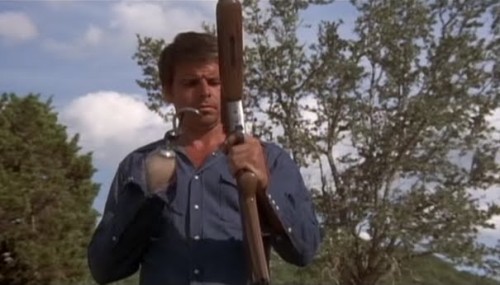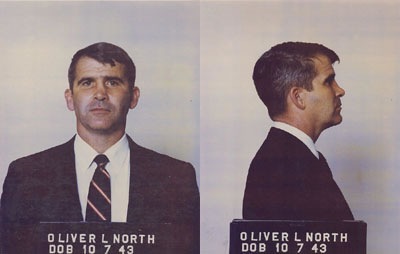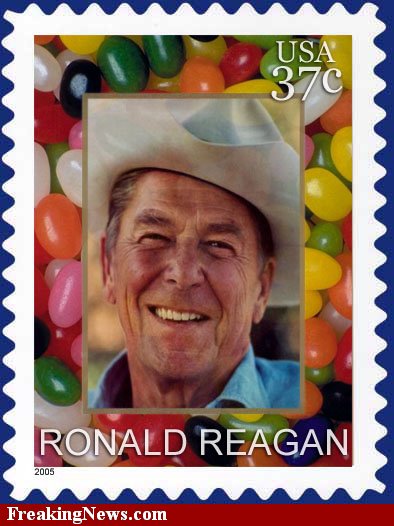
Bill Devane in Rolling Thunder, 1977
It’s possible that The Expendables could turn out to be a time capsule candidate for the early 21st century —meaning it may well be, in its way, as perfect a reflection of American psychosis as one could find.
In a sense I wanted to like it. I have an almost soft spot for Stallone, who began his film career in a softish porn exercise (now) called The Italian Stallion. When he made Rocky, it was an odd combination of forces that somehow coalesced to push a modest John Avildson boxing fairy tale into something more iconic. It may or may not be useful to ask how that happened, but for now lets just say the real break out for Stallone was Rambo. By the time of Rambo, all three of the first Rocky films had come out, and so had FIST and Paradise Alley. Now FIST isn’t at all unwatchable (almost but not totally) but both these films had exposed the deep limitations of Stallone as an actor. Never mind, the Rocky franchise was enough for Stallone to be an A-list star and then Rambo, First Blood. However, there were two other films that happened in this period; Nighthawks and Cobra. Both are vaguely sadistic in a way devoid of irony or even purpose. Cobra, in fact, is a deeply malignant exercise in violence porn. Again, however, you see Stallone, in terms of career caretaking, unable to step outside the two franchises that have stayed with him for thirteen films.
Stallone’s sensibility, however, has remained constant. His aspirations for artistic greatness, and he has them, have always been cringe-inducing and so as a reflex he has taken on a kind of wispy thin self-mockery. Except it’s so wispy as to become its opposite all too often. The so-called serious acting roles, Cop Land, are actually pretty dreadful. However, one can argue that Rambo became a far more culturally influential franchise than Rocky, and that it defined a good deal of the Imperialist character of the ’80s United States. Rambo, as Douglas Kellner has pointed out, co-opted the surface of sixties radicalism and turned it into the militarist right-wing values of Reagan America. The health food obsessed loner, long hair, bandanna, and individualist ethos, as well as anti-military (but only its bureaucracy) the character of John Rambo evolved into exactly what the US (male white) public desired after Vietnam. Its worth noting that the first Rambo film was set in the US, and the war Rambo waged was against a corrupt small town sheriff. In fact at the end, Rambo breaks down crying , expressing how there is no place for him, or other returning vets, in the US. However, by the second Rambo film, all ambivalence had been removed. Rambo was the iconic Reagan era warrior, and as Kellner points out, much like the Chuck Norris character in the Missing in Action franchise. Both are brutish and inarticulate, and hyperviolent.
Now, there were a series of post Vietnam films, Cutter’s Way, Who’ll Stop the Rain, Rolling Thunder and Nightmoves, in which the collective angst of Vietnam and My Lai were clear shadowy backdrops, even if, as in Nightmoves, Vietnam is never mentioned. But these were films that existed in a moral twilight, a sense of doubt permeated all of them. Doubt about how the working class had been treated, at the dishonesty of the government, and doubt about the more abstract illusions of the American Dream. With Rambo, certainly at least by the second in the series, the issue was not politics, but the damaged psyche of the white male in America. The resentments and the feelings of a masculine crisis, were exaggerated aspects of the narrative. Rambo was there to masculinize white working class men. The feeling that white men were now victims, being preyed upon by feminism, foreigners in our own country, and weak government officials found a responsive audience in young and middle-aged white men. The 80s was the go-go stock market economy (worth a look at Wall St, in the context of the Rambo franchise) but the working class felt no affinity with guys in suits. The masculine ideal that was formed by gunfighters and Indian killers, by the heroes of westward expansion, was a man emotionally distant, more at home with other men and horses, and incapable of receiving love. He was also self-reliant to the point of pathology. Throughout all of this, the US military was bombarding the country with its incessant propaganda for militaristic values of honor (sic) and patriotism. Again, Vietnam was a huge blow, and John Wayne had been partially displaced by Lt Calley. So, as Reagan destroyed public education, the resentment festered and the anti-intellectual tendencies already in place, seemed to spike. The military was both a way out of small town poverty but also a way to achieve a sense of self-importance.
The Rambo films from the start relied on a camera that fondled and caressed the vascularity and muscles of Rambo, as well as his weaponry. Lt Calley has been left behind and replaced by Oliver North. The Rambo films idealized the male body, and identified it with the weapons it so expertly used. However, no matter the heroics and talents of Rambo, there is always the shadow of Vietnam, of the war ‘we” lost, lost because “we didnt have the guts to finish it”. There is also in Stallone’s Rambo a masochistic side that must be hurt, must somehow be punished for not winning. It is a contradiction, and as such is only overcome (in each instance) by blowing up bigger things and more people.
So, we arrive at The Expendables. Directed by Stallone, it also stars Randy Coutoure, real life mixed martial artist, and Stone Cold Steve Austin, of WWF fame. There are cameos by Schwarzenegger and Bruce Willis, and the film also stars former Rocky foe Dolph Lundgren and Mickey Rourke, and Jet Li and Jason Statham. Just looking at the cast one might see a virtual road map of masculine over compensation and cultural resentments. But what is obvious here is that Stallone must employ “real” fighters and action guys—Couture and Austin, as well as, to some degree, Jet Li. Because one of the most startling realities of sitting watching this exercise in masculine worship is that both Stallone and Rourke have become increasingly grotesque figures, due to cosmetic surgeries, if nothing else. Stallone was busted a few years back with a case of Jintropin…or HGH. His steroid use is clear (as it is with Arnold) and yet, for an American male public, the illusion of power is better than not having anything. Better than ambiguity. This is a culture that lives so totally in its illusions, in its fictional narratives, that details like cheek implants are unimportant. That Stallone’s eyebrows are firmly stuck in one position, is irrelevant so long as he is still buffed and shooting at “bad guys”. Another amusing note; the villain in this film is played by Eric Roberts, who recently got out of rehab for his marijuana addiction (whatever). There is a dialectic here, see, and that is between the Hollywood actor and his insecurity about not actually being ‘real”, and the filmic narrative which is about hyper machismo and “realness”. In fact, the masculine bonhomie in this film is so leaden and lifeless, so cartoonish and strained, that it speaks to exactly how delirious and hungry is the audience for this stuff, that nobody cares. A society that semi consciously ‘knows’ that its master narrative isn’t “real” seems to be one for which an endless stream of this junk must be devoured.
Rourke simply has a funny hat and smokes a weird pipe and that’s enough. The man who has had so many cosmetic surgeries (as well as once riding his Harley as part of the Melrose motorcycle gang), that his search for masculinity (an absurd short-lived boxing career) has become an endless drag review of butch accoutrement. Then, Stallone, too, increasingly seems like a fashion model for hyper masculine detailing. The parading of these accoutrement takes up a quarter of the film. Harley’s, knives, tattoos, and of course guns. The emotional distance from women is expressed in two forms; Statham’s beating up a boyfriend of his ex’s…who of course gave her a black eye. And secondly, Stallone’s aw shucks Gary Cooper like flirtation with the beautiful daughter of the evil south American general.
There is essentially no story. None worth talking about. There is only the pumped up (literally and figuratively) masculinity of the action heroes. There is more cosmetic surgery and steroids in this film than maybe any other ever made. And then there is “age”. The flight from age. The age factor is really the auteur imprint behind all the rest of the tropes. Willis, Arnold, Stallone, and Rourke; men in their sixties. None greying, and all fetishizing their presentation of self. Cigars, chains, guns and knives….motorcycles and of dyed hair. Hard bodies and frequent wardrobe changes. That they are almost all Republicans is worth considering, too. In any event, The Expendables is the logical conclusion to the fantasies sprung circa Iran/Contra. The Ollie North and John Poindexter, McFarlane and Ledeen. Reagan with colon cancer, but his “guys” were out there doing what had to be done. “Cowboys” they were. This is the feverish and sweaty palmed fantasies of Bill O’ Reilly or Rush Limbaugh. This is the lurid dreamscape of Sean Hannity as well as of George Dubya Bush. See, it’s about buying the boots and cowboy hat, about a tin of Copenhagen in the back pocket of my jeans, and about swagger. The fetid fantasies of a senile President leads inexorably to the racist cant of the Tea Party. The attacks on a black President, who just CANT be American…it’s not possible. If only Chuck Norris would go kick some Kenyan butt, I’m sure we could find the real birth certificate. These may be the exaggerated extremes, but lurking beneath this cartoon is the ever metastasizing feelings of powerlessness and anger in the white working class male in the US.
What was the invasion of Grenada, if not a nocturnal emission from the senile and Hollywood built brain of Reagan? It was all fantasy, too. Yet, Clint Eastwood, made a heroic story out of it in Heartbreak Ridge. Eastwood, a slightly more complex thinker than Stallone, at least accepted the Grenada story (and invasion) as slightly absurd, and shifted his focus to the character he played, a lifer in the Marines. So, the illusions only shifted a bit. Heartbreak Ridge came out in 1986. The trajectory from Iran/Contra and Rambo through Grenada to the Iraq invasion and finally 9-11 is to take a tour of the male psyche as it exists in the US. Now, ten years after 9-11 the culture industry continues to look for ways to recycle the same formula—the same masculinist compensation. But the economy sucks, unemployment is higher than its been since the great depression and rural america has replaced small farms with Meth labs. The obsessions with sports are tarnished with drug use (and in the case of the NFL, with a seemingly endless litany of brain damage) and corporate manipulation. Stallone, like a trained rat on amphetamine, steps up again, and again and again and again, his face stranger, less expressive (if that were possible) and his dye job more obvious, and recites from the American blue book of masculinity. And that masculinity is even more adrift than it was when the first Rambo came out.
The Expendables is frightening, in the way toothless old prostitutes, with rouged cheeks, are frightening. This film is bad dream, but one from which none of us seems able to awake.
John Steppling


